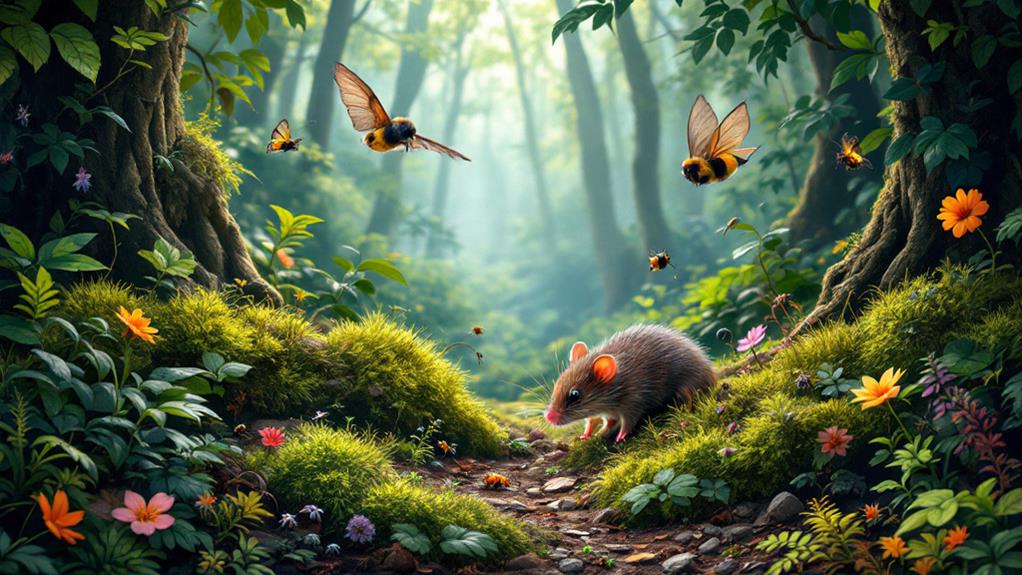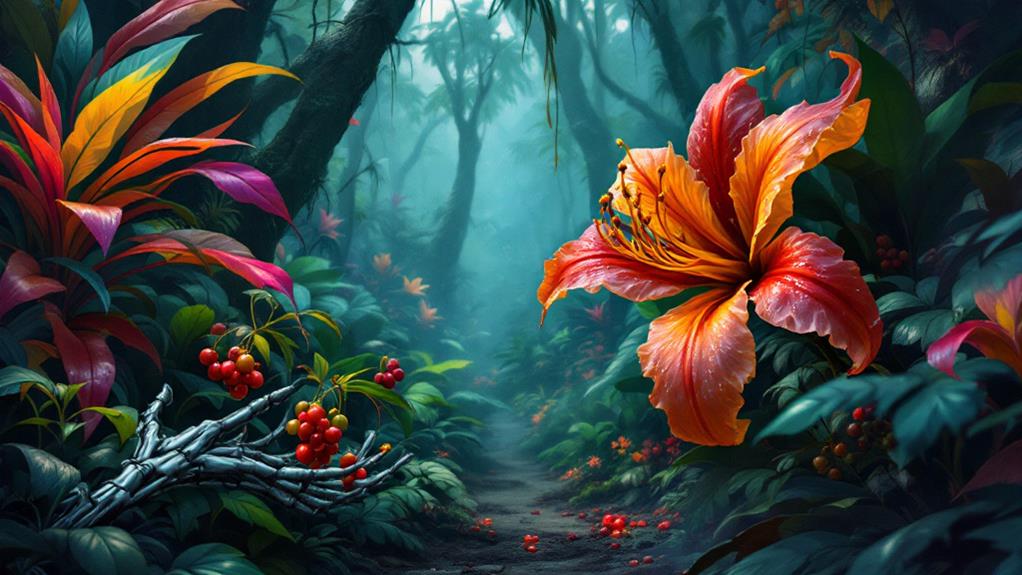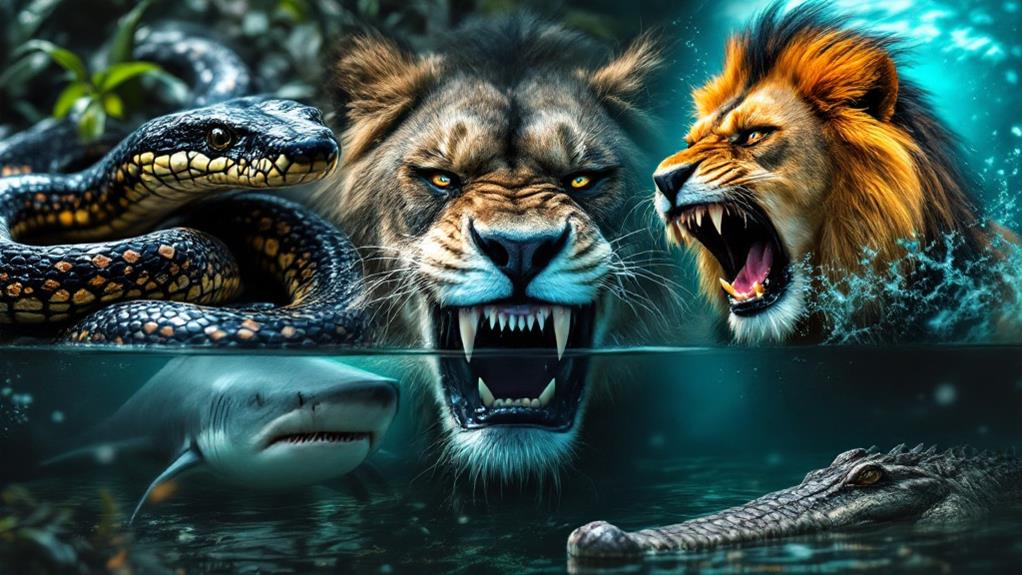The World’s Deadliest Animals: Creatures You Should Avoid

When exploring the wild, you'll encounter nature's deadliest creatures. Mosquitoes, though tiny, are responsible for the most human deaths annually through disease transmission. Box jellyfish possess potent venom that can cause death within minutes. Venomous snakes like the Black Mamba and Inland Taipan strike fear with their lethal bites. Hippos, surprisingly aggressive, can outrun humans and crush victims with powerful jaws. Deadly insects include venomous spiders, scorpions, and disease-carrying flies. In the sea, sharks and crocodiles pose additional threats. Understanding these animals' behaviors and habitats can help you stay safe on your expeditions.
Mosquitoes: Silent Killers
Deception lies at the heart of the mosquito's deadly impact. These tiny insects, often dismissed as a mere blood sucking nuisance, are actually the world's most lethal animals. You might not realize it, but mosquitoes are responsible for more human deaths each year than any other creature on Earth.
Their danger stems from their role in disease transmission. When a mosquito bites you, it's not just taking your blood; it's potentially injecting you with deadly pathogens. Malaria, dengue fever, Zika virus, and West Nile virus are just a few of the life-threatening diseases these insects can spread.
What makes mosquitoes particularly dangerous is their ubiquity and stealth. They're found on every continent except Antarctica, and their bites are often barely noticeable. You might not even realize you've been bitten until it's too late.
To protect yourself, use insect repellent, wear long-sleeved clothing, and eliminate standing water around your home where mosquitoes breed. Remember, these seemingly harmless insects are far more dangerous than they appear. Don't underestimate the threat they pose to your health and well-being.
Box Jellyfish
While mosquitoes reign as the deadliest animals on land, the oceans harbor their own silent killer: the box jellyfish. These translucent creatures, found primarily in the waters of the Indo-Pacific region, possess some of the most potent venom in the animal kingdom. You'll want to steer clear of their venomous tentacles, which can extend up to 10 feet in length.
Box jellyfish deliver excruciatingly painful stings that can cause immediate cardiovascular collapse and death within minutes. Their venom attacks the heart, nervous system, and skin cells simultaneously. If you're lucky enough to survive an encounter, you'll likely endure severe pain for weeks and may be left with significant scarring.
What makes these creatures particularly dangerous is their near invisibility in water. They're also excellent swimmers, capable of reaching speeds up to 4 knots. Unlike other jellyfish, box jellies have eyes and can actively hunt their prey. To protect yourself, wear protective clothing when swimming in known box jellyfish habitats and always heed local warnings. If stung, immediately seek medical attention and apply vinegar to the affected area to neutralize unfired stingers.
Snakes That Strike Fear

Slithering silently through grass and trees, snakes have long been a source of both fascination and fear for humans. These reptiles, equipped with fangs and venom, can strike terror into even the bravest hearts. While not all snakes are dangerous, some species possess lethal capabilities that demand your respect and caution.
Among the most feared are the Black Mamba, King Cobra, and Inland Taipan. The Black Mamba, found in Africa, is known for its aggressive behavior and neurotoxic venom. It's considered one of the fastest and most venomous land snakes. The King Cobra, native to Asia, is the world's longest venomous snake and can deliver enough venom to kill an elephant.
The Inland Taipan, although less aggressive, holds the title for the most toxic venom of any land snake. Its striking speed is exceptional, often catching prey off guard. When encountering these serpents in their natural habitats, it's vital to maintain a safe distance and avoid provoking them. Remember, most snakes will only attack if they feel threatened or cornered.
Hippos: Unexpected Aggressors
Appearances can be deceiving when it comes to hippos. These massive creatures may look docile and sluggish, but they're actually one of Africa's deadliest animals. You'd be surprised to learn that hippos kill an estimated 500 people annually, surpassing many predators in human fatalities.
Hippos are fiercely territorial, especially in their aquatic habitats. They'll aggressively defend their space against perceived threats, including humans and boats. Their speed is shocking; they can outrun you on land, reaching speeds of up to 19 mph. In water, they're even more formidable, using their bulk to capsize boats and their powerful jaws to crush victims.
Don't be fooled by their herbivorous diet. Hippos have enormous canine teeth and a bite force strong enough to snap a crocodile in half. Their unpredictable nature makes them particularly dangerous. They can appear calm one moment and charge without warning the next. If you're traveling in hippo territory, maintain a safe distance and never come between a hippo and water. Remember, these "river horses" are not gentle giants but unexpected aggressors that demand respect and caution.
Tiny Terrors: Deadly Insects

Buzzing wings and scuttling legs can carry deadly consequences. You might not expect tiny insects to pose a significant threat, but these minuscule creatures can pack a lethal punch. Mosquitoes, for instance, are responsible for more human deaths annually than any other animal due to the diseases they transmit, such as malaria and dengue fever.
Venomous spiders like the Brazilian wandering spider and the Australian funnel-web spider can deliver potent bites that cause severe pain, paralysis, and even death if left untreated. Similarly, stinging scorpions, particularly those found in North Africa and the Middle East, can inject powerful neurotoxins that may prove fatal, especially to children and the elderly.
Other deadly insects include the tsetse fly, which spreads sleeping sickness, and the kissing bug, a carrier of Chagas disease. Even seemingly harmless creatures like bees and wasps can trigger life-threatening allergic reactions in some individuals. When traveling or exploring new environments, it's essential to be aware of these tiny terrors and take appropriate precautions to protect yourself from their potentially deadly encounters.
Predators of the Sea
Beneath the ocean's surface lurks a world of deadly predators. While sharks often get the most attention, they're far from the only marine creatures you should be wary of. In fact, some of the most dangerous sea dwellers are much smaller and less conspicuous.
Take the stonefish, for example. It's the world's most venomous fish, capable of killing an adult human within hours if left untreated. These experts of camouflage blend seamlessly with coral reefs and rocky sea floors, making them nearly impossible to spot. One wrong step, and you'll find yourself in excruciating pain from their potent spines.
Another tiny terror is the blue-ringed octopus. Don't let its small size and beautiful coloration fool you; its venom is powerful enough to paralyze and kill you within minutes. There's no known antidote, making encounters with this creature potentially fatal.
Other dangerous sea predators include box jellyfish, lionfish, and sea snakes. When exploring marine environments, always be aware of your surroundings and avoid touching unfamiliar creatures. Remember, respect for the ocean and its inhabitants is key to staying safe.



